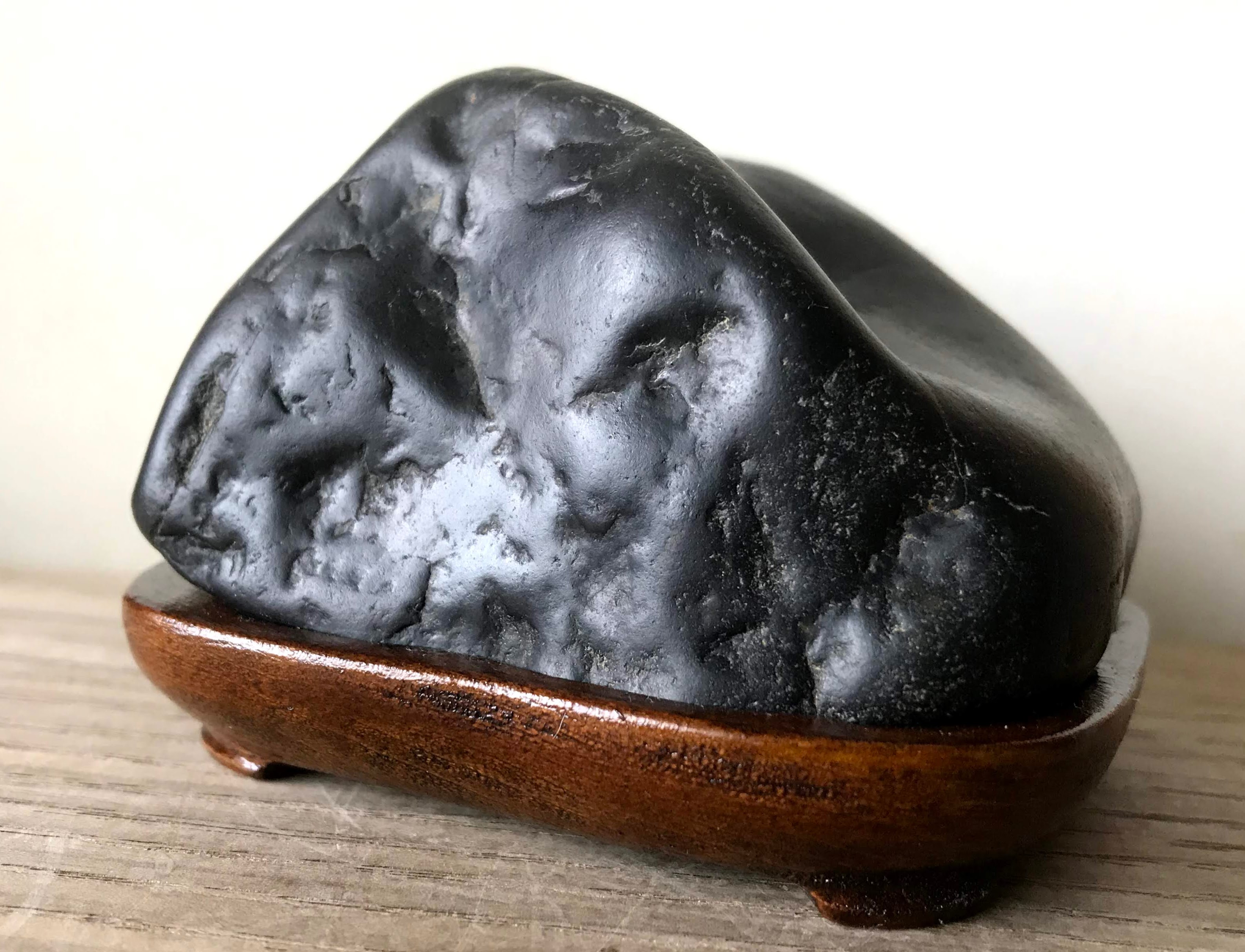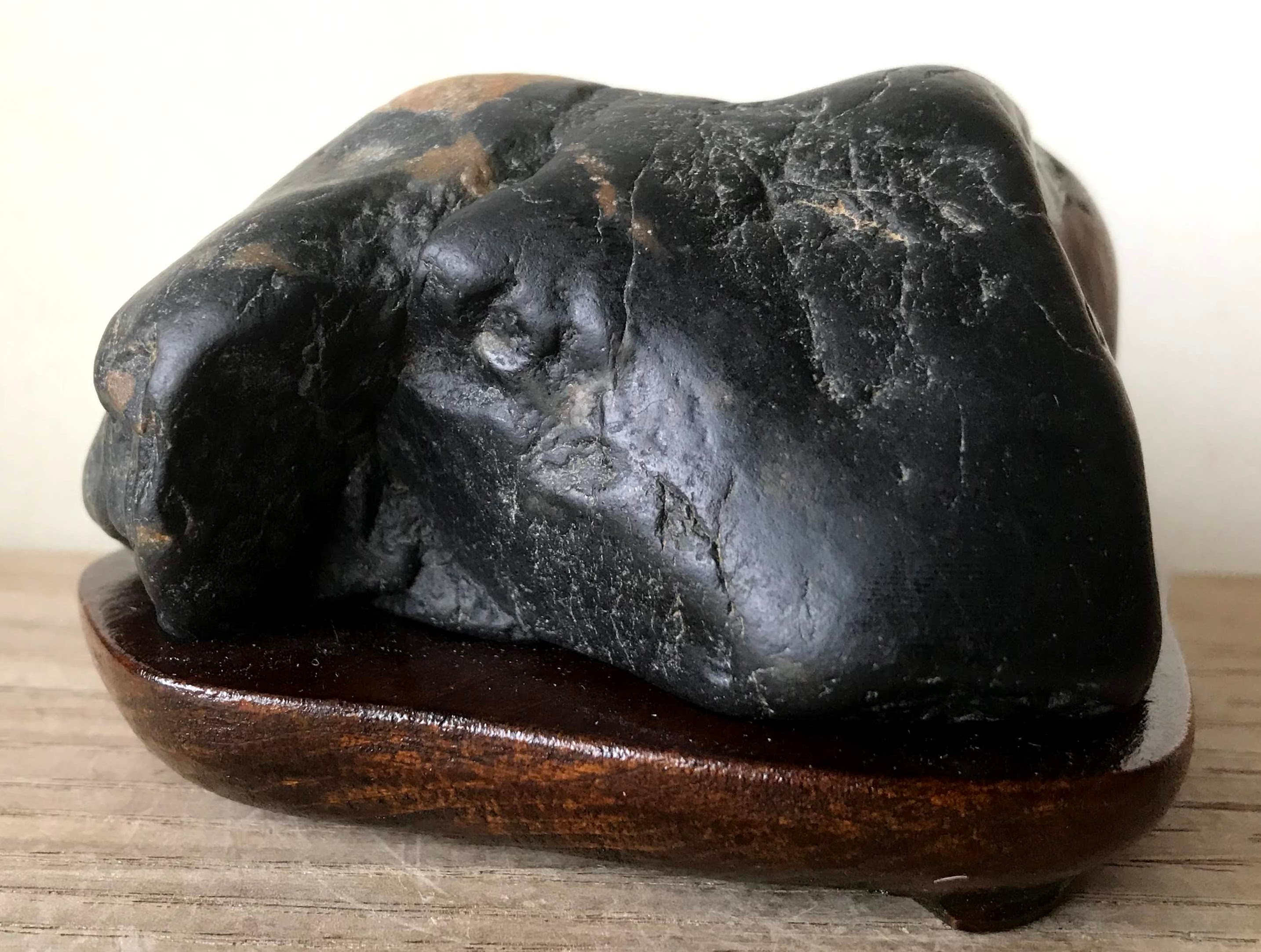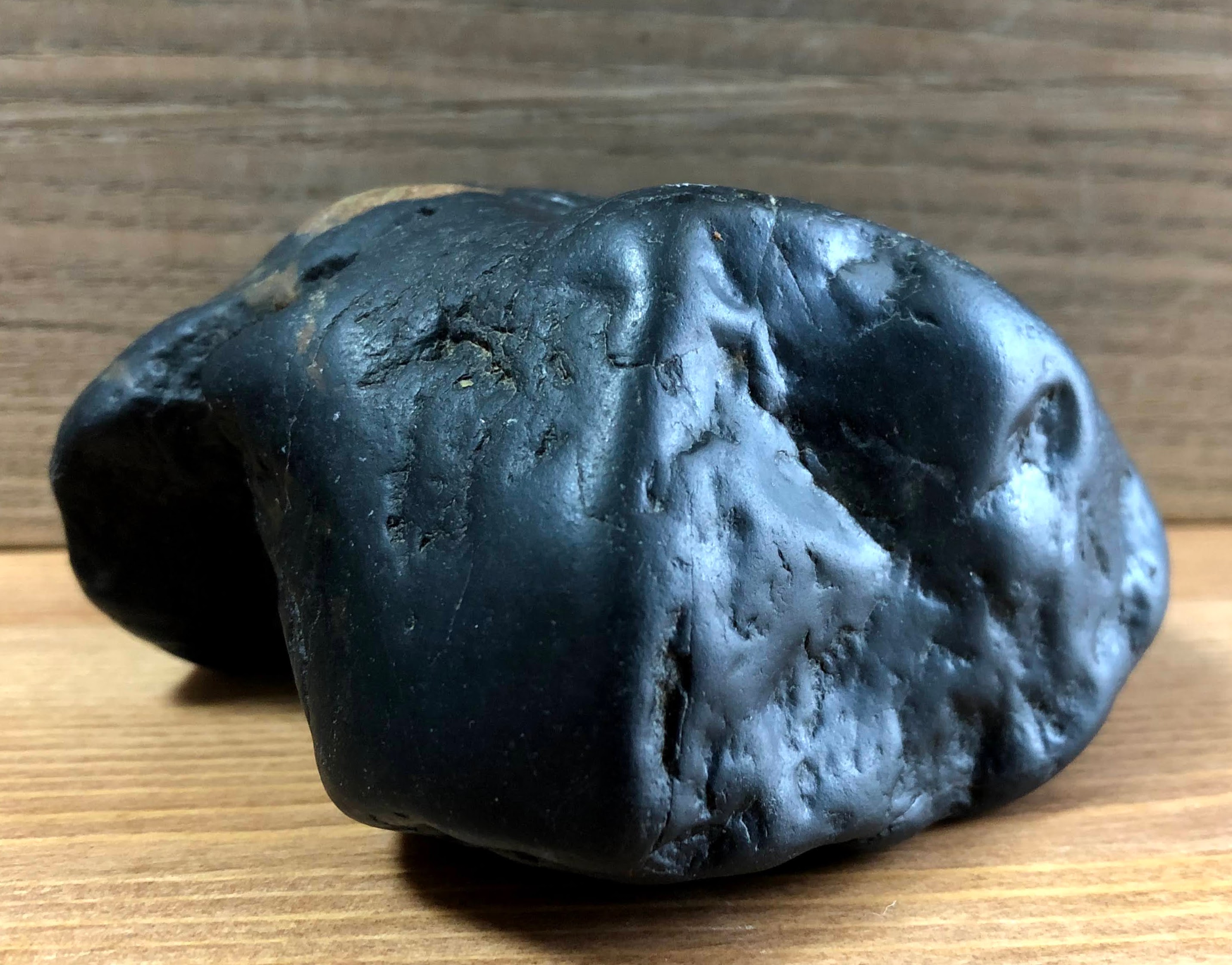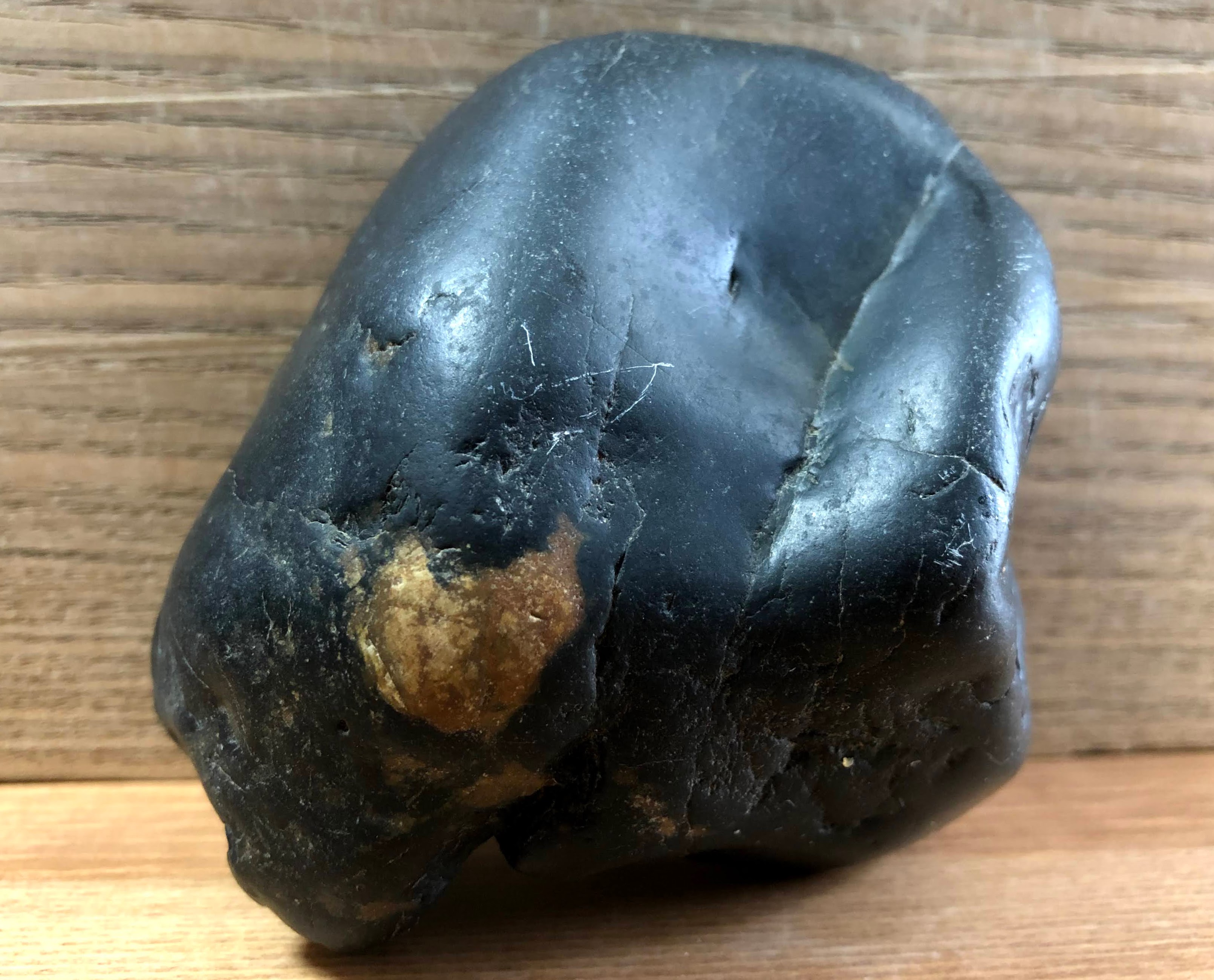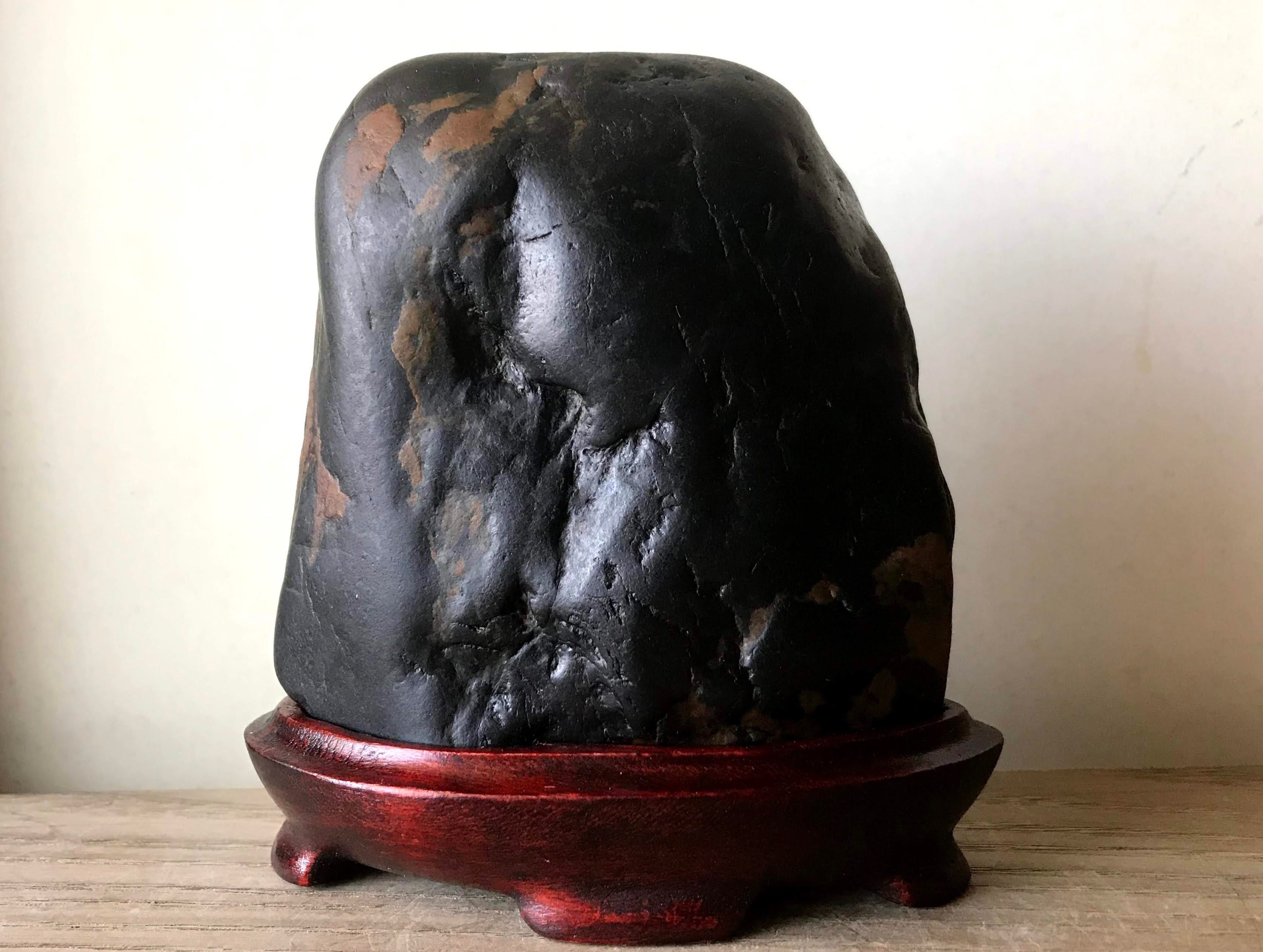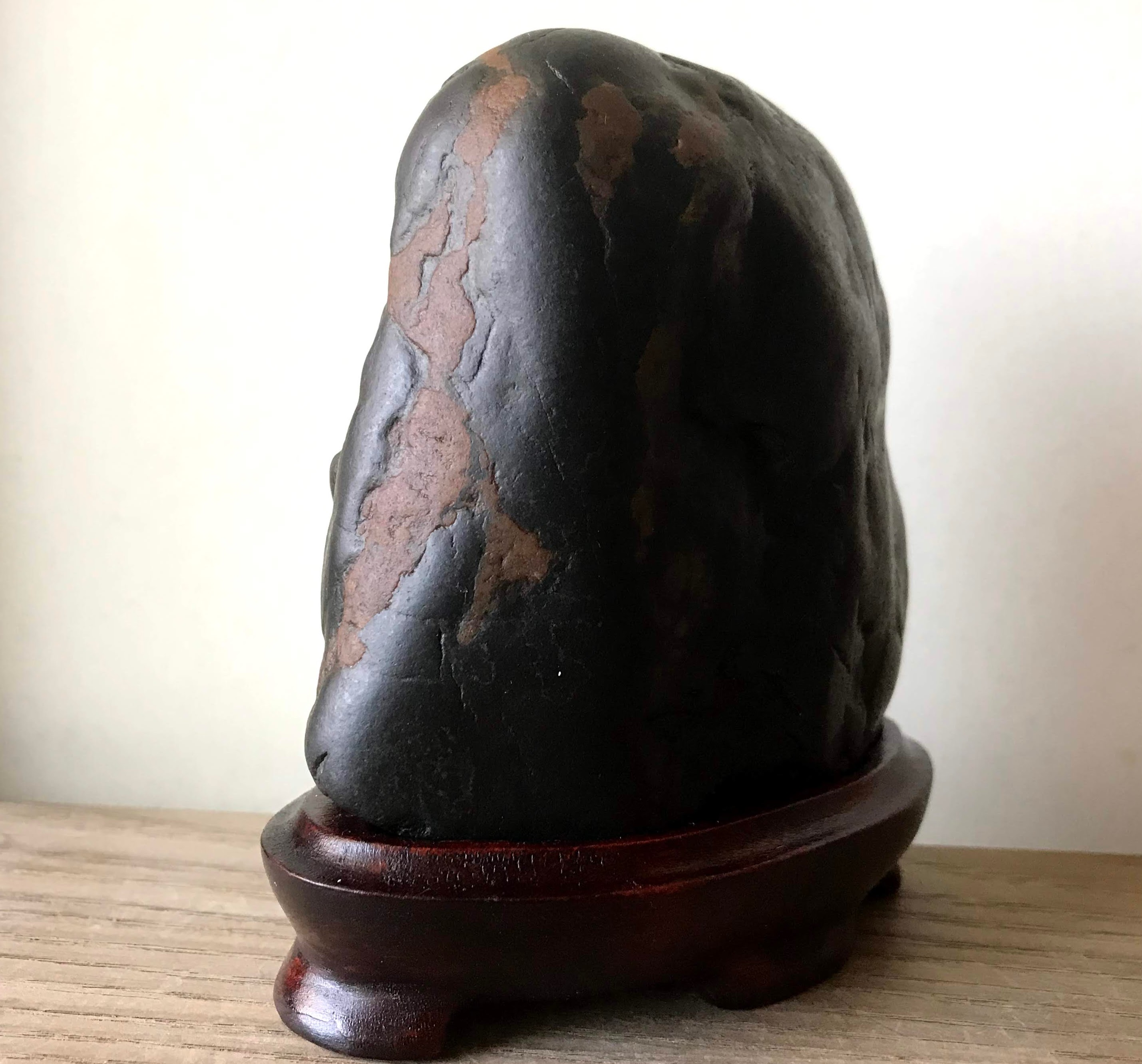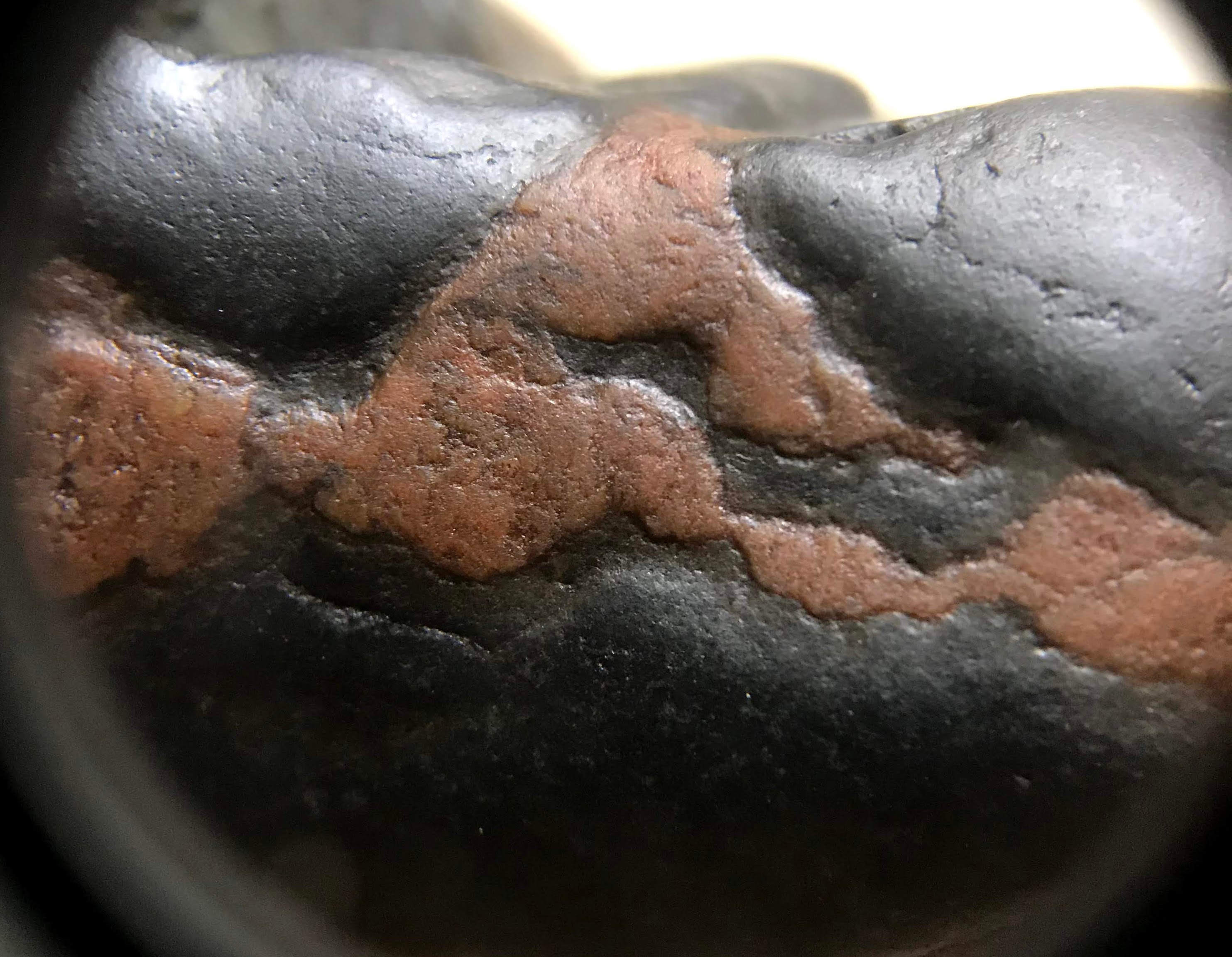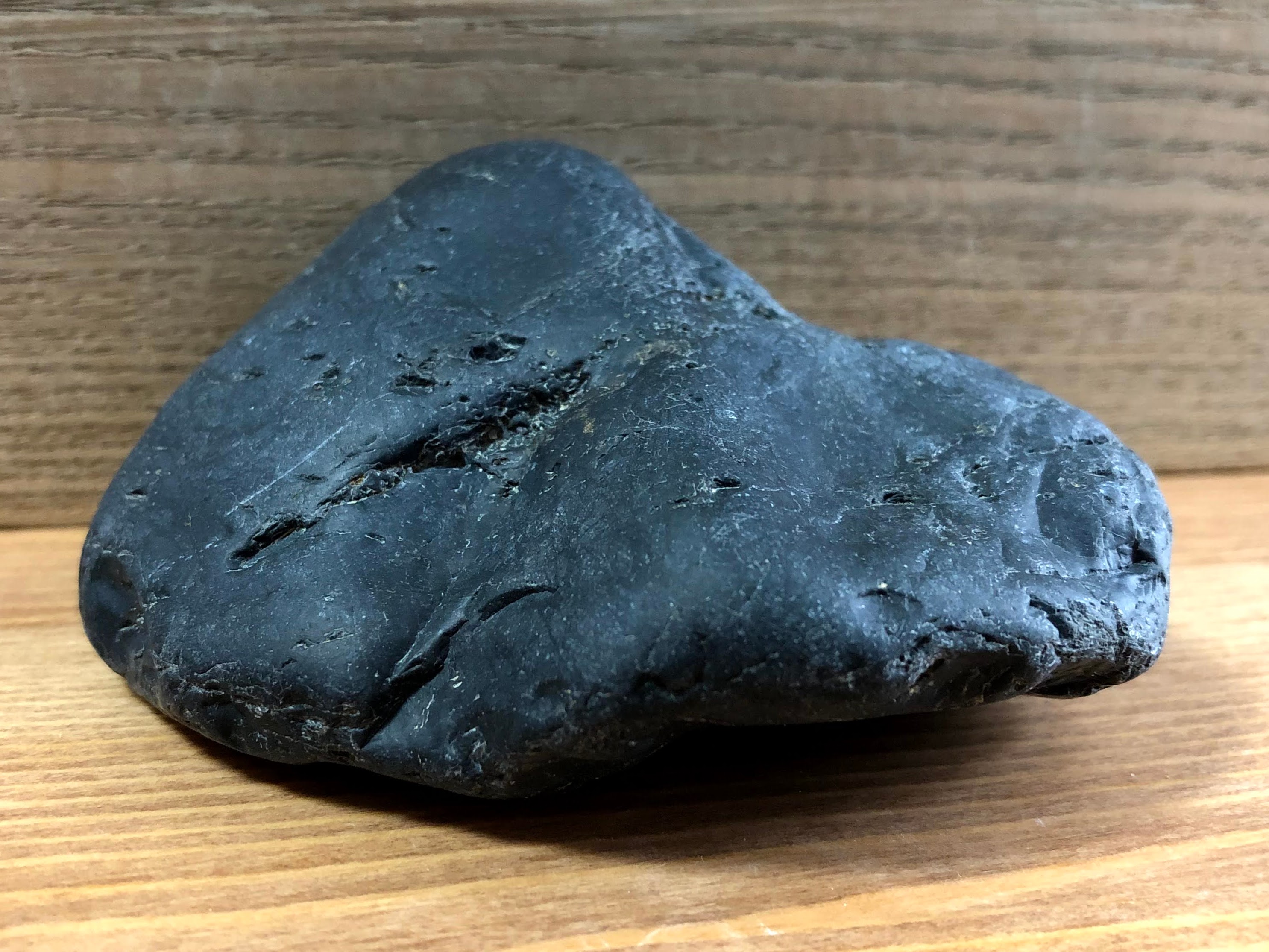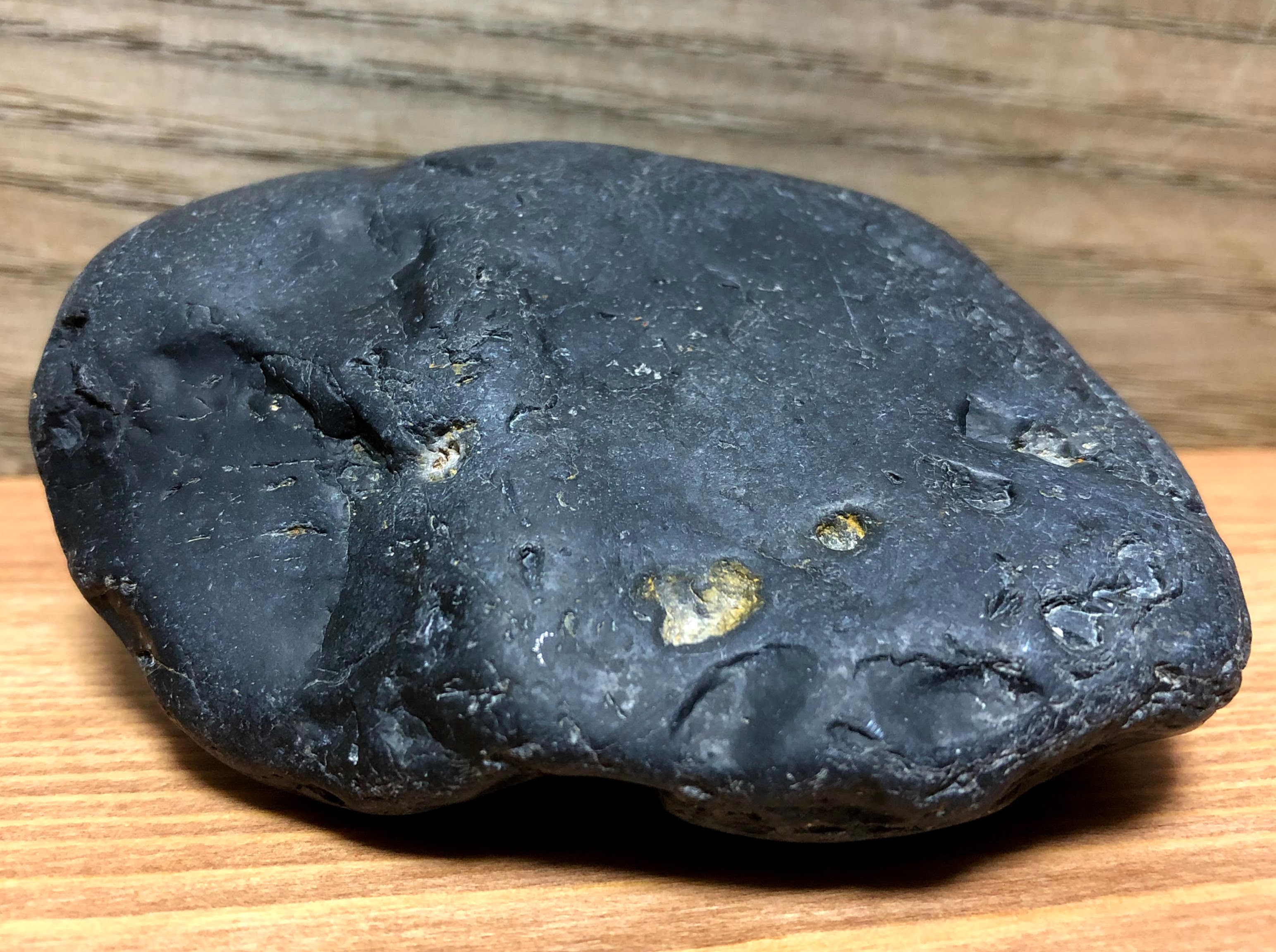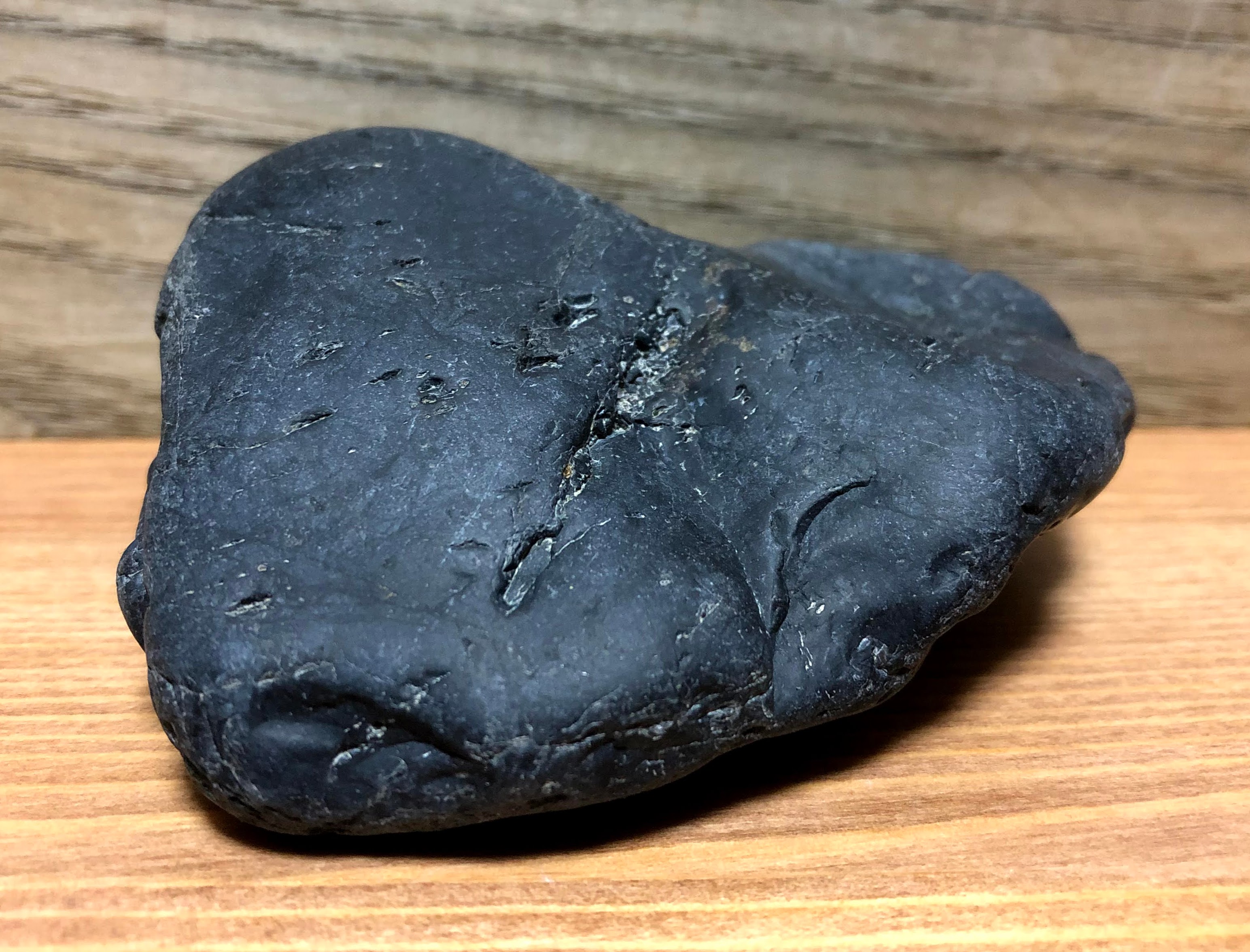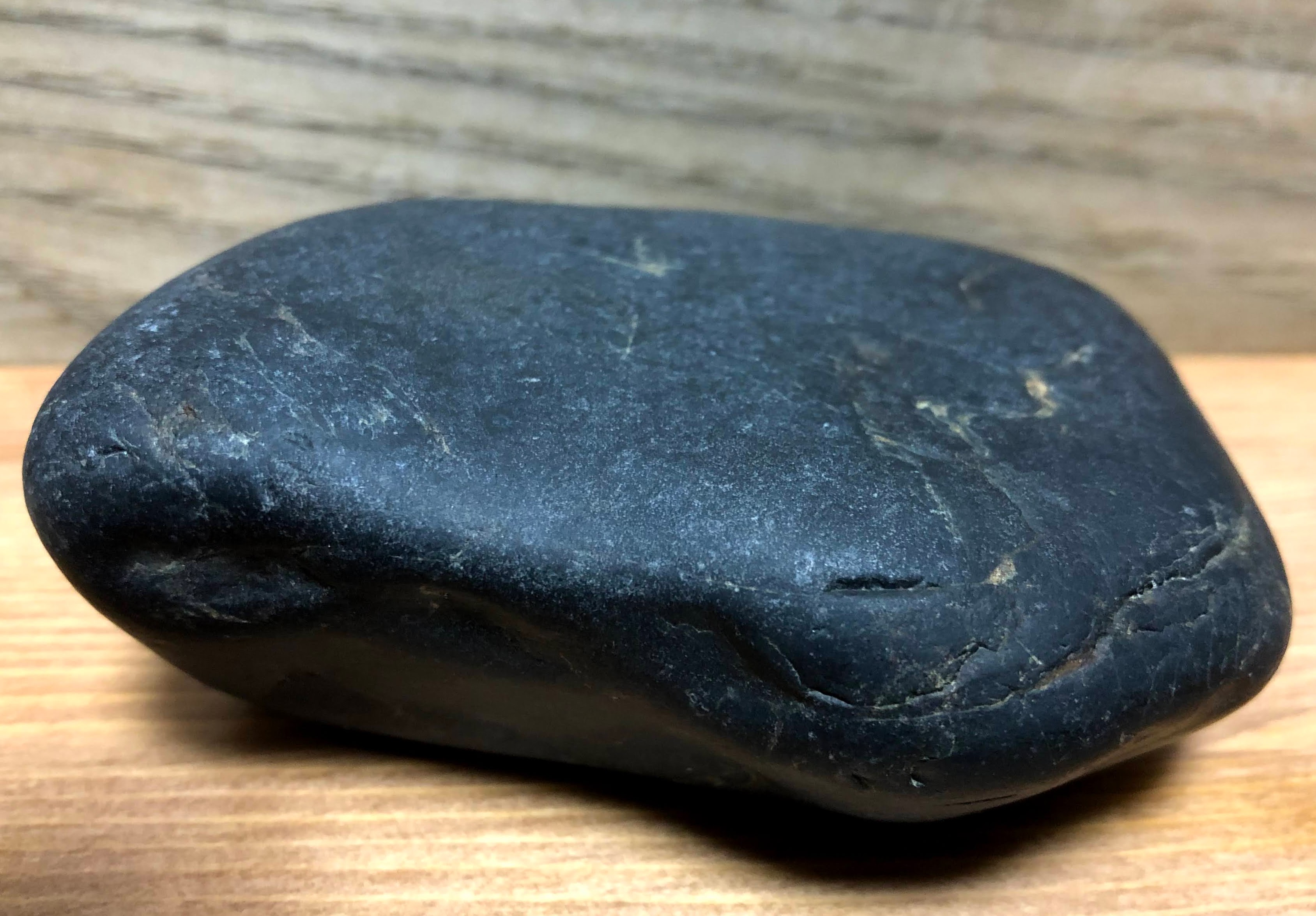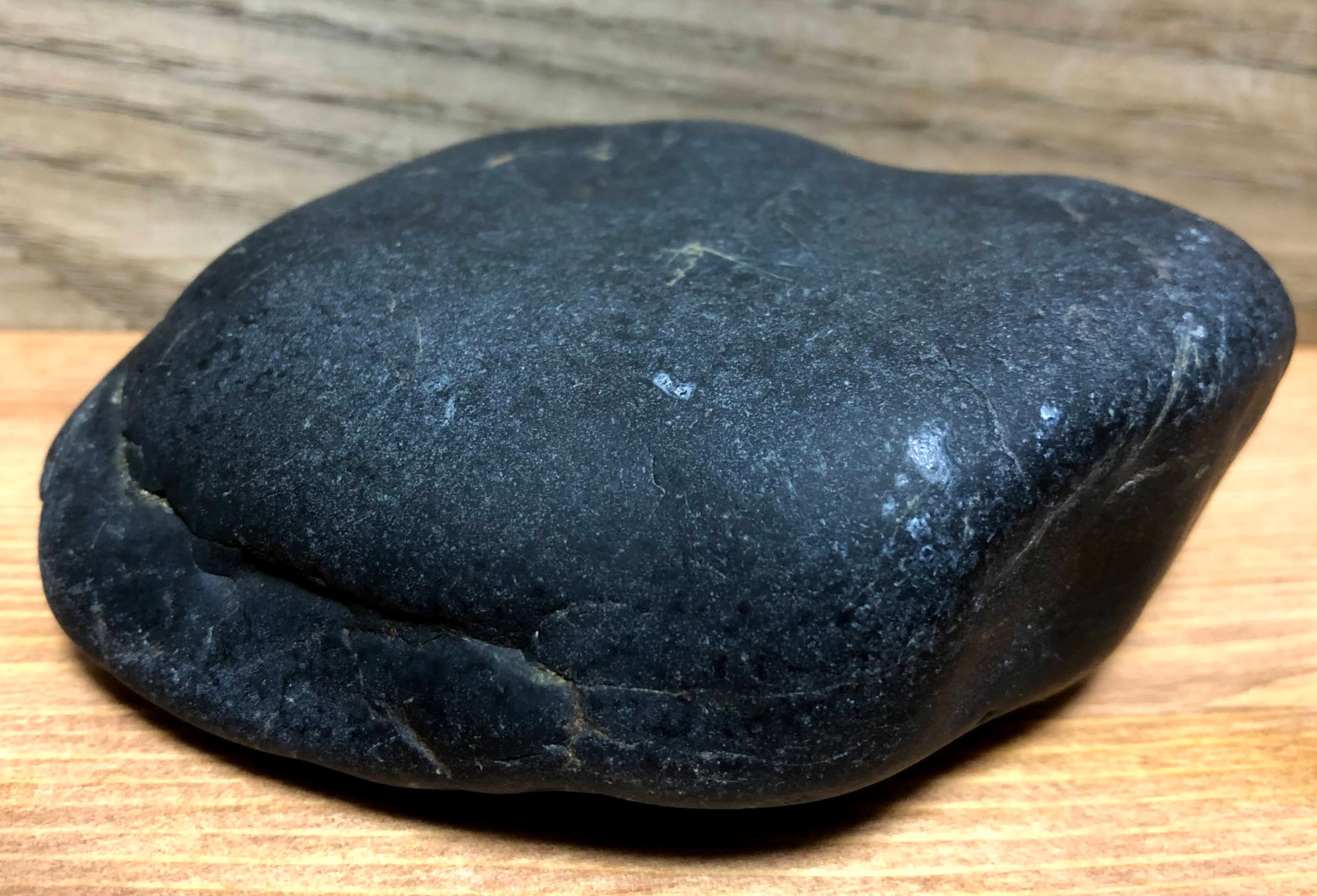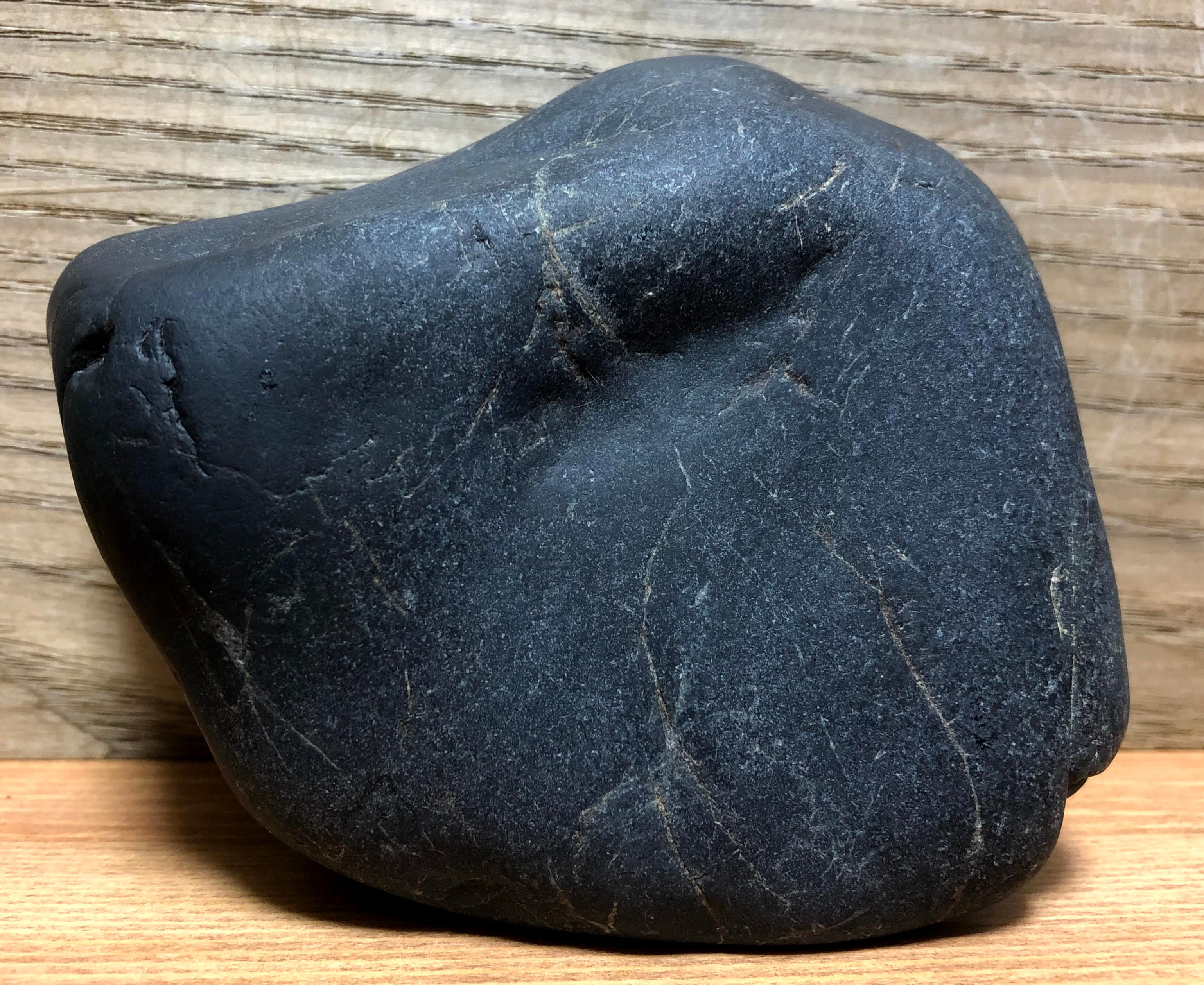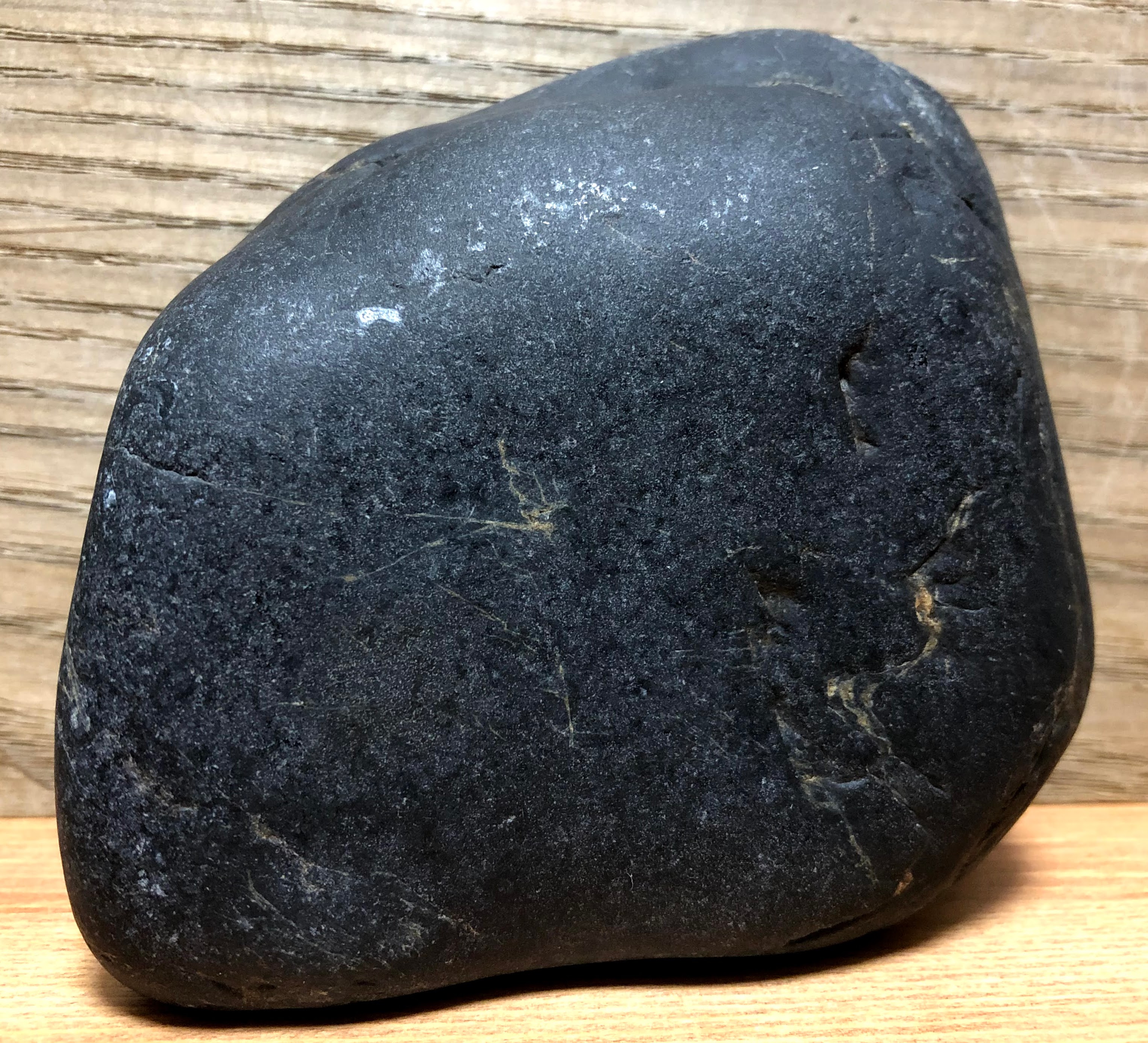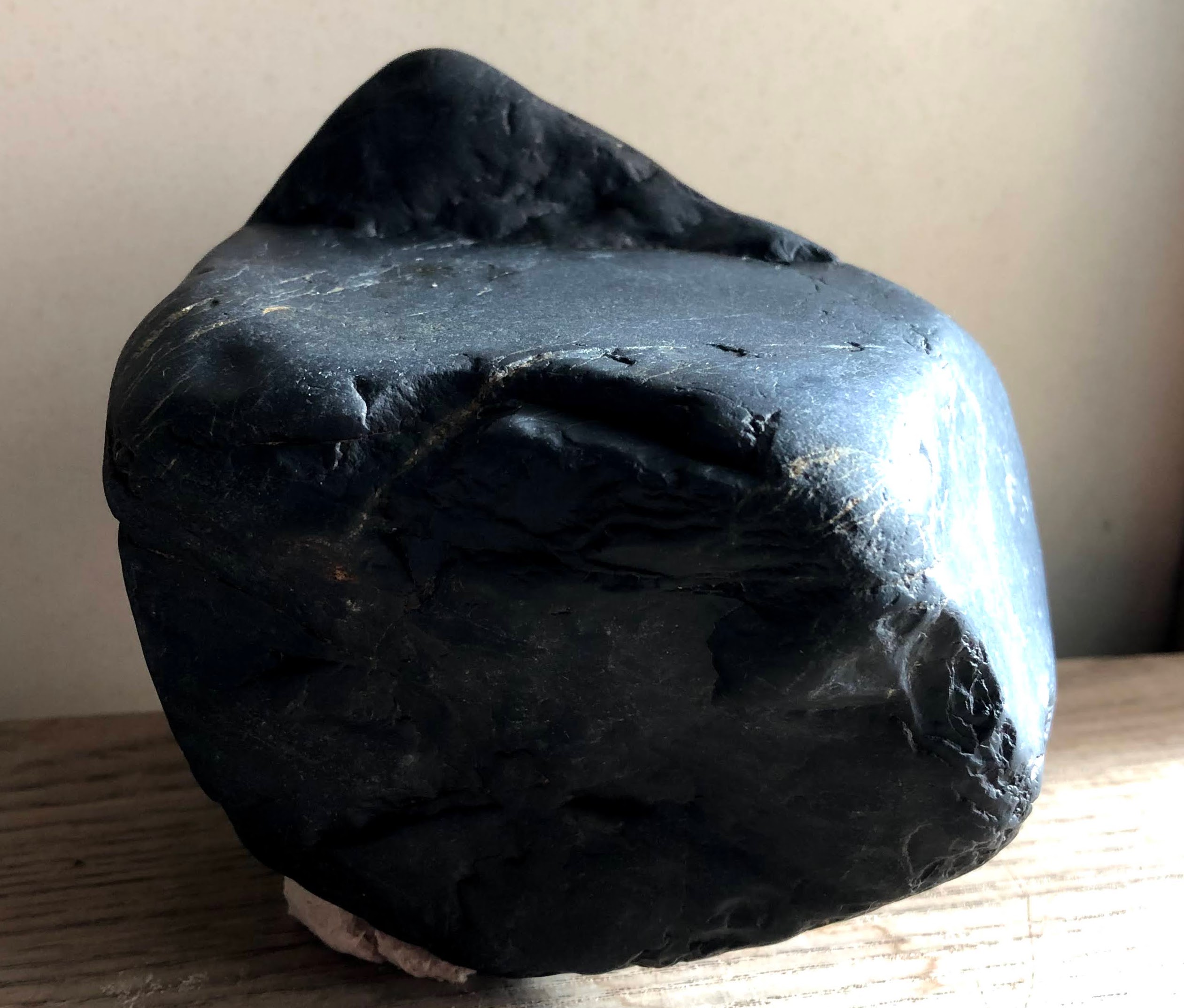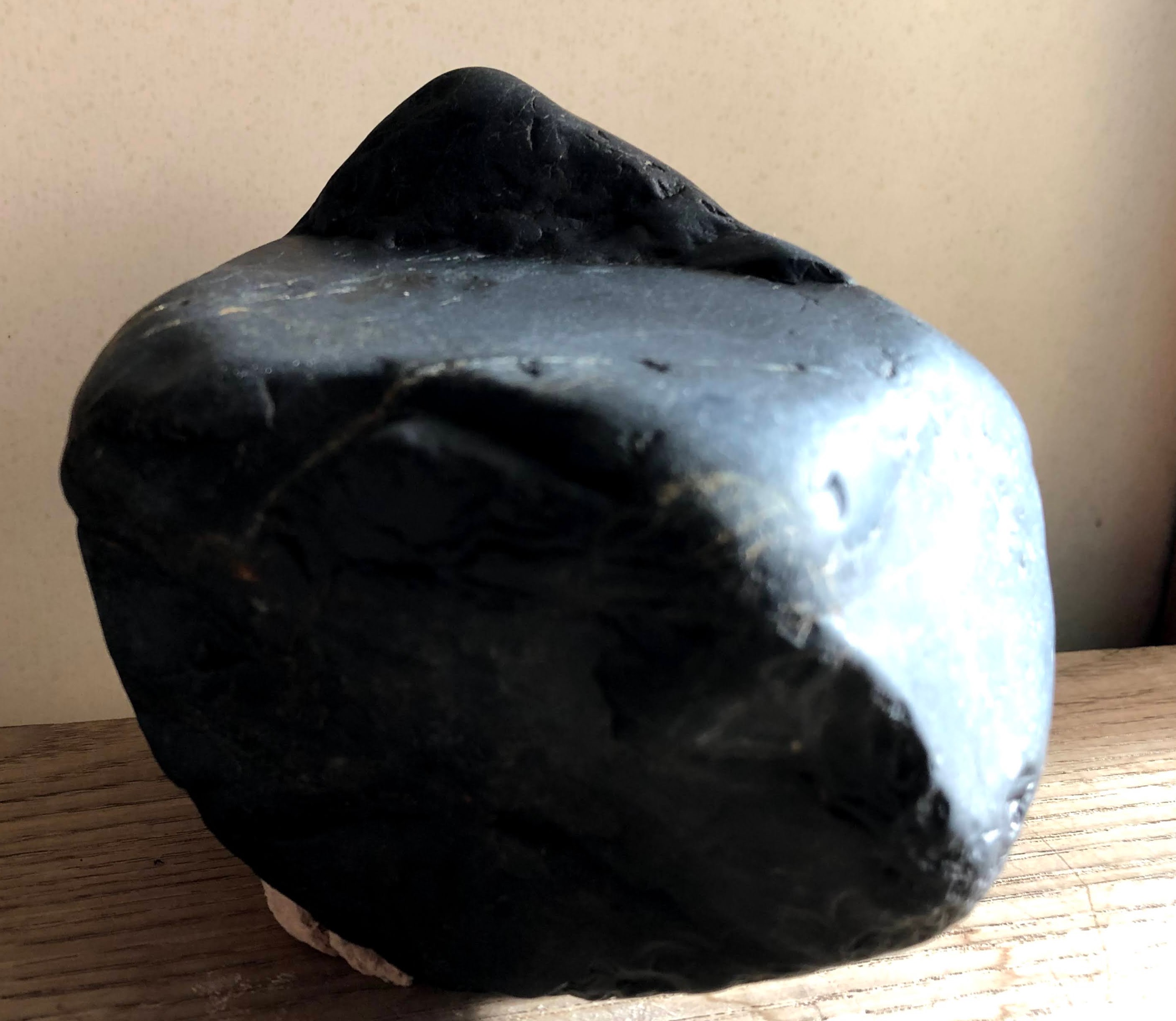KamuiCotan-seki-I, 神居古潭石
KamuiCotan-seki-I
I would like to introduce KamuiCotan-seki here.
In general, "Kamui Cotan Seki" means stones from Kamui Cotan, however, they are not any stones but some specific stones.
Basically, there are seven categories or more. I do not have all seven KamuiCotan-seki, but would like to introduce some on hand.
KamuiCotan-seki, Real true black
This is KamuiCotan-seki, Real true black.
Actually, I hesitated to use the word Real and True because they are duplicated. However, in Japanese, it is "本真" and the two words, 本 and 真 are also duplicated.
So, I decided to use both Real and True and 本真黒石 is now Real true black stone. The reason why the words duplicated are used is because Real true black is blacker than True black stone.
For this Real true black, quality of shinny portion on the front side is very good.
Quality of the back side is not so good, but contrast between front side(shinny) and back side(rough) is interesting.
And also, another attractive feature is this brown spots.
It looks like hart or fox.
KamuiCotan-seki, Real true black
This is another KamuiCotan-seki, Real true black.
The difference between Real true black and Real black is with brown spots or without.
Real true black has brown spots but Real black does not.
In KamuiCotan-seki, if brown spots are there, surrounding black color becomes more black and therefore, brown spots are welcomed.
And by the brown spots, Real black becomes True real black.
Further, brown spots look like water fall or something in this Real true black. It enhances this stone.
Very clear boundary between brown and black portion.
KamuiCotan-seki, True black
This is True black.
There is no brown spot and black color is light or pale than Real true black.
Conchoidal fracture which can be seen in jasper or chert is almost seen in the back side.
If cutting away high quality portion from KamuiCotan-seki, it looks like vitreous silica as chert of very high quality.
This is the reason why KamuiCotan-seki is called oily stone.
Because of the fine-grained surface, it becomes very shiny if you just wipe with cloth briefly.
The shape of this stone is very good and it should be Shimagata-ishi if it is not Toyama-ishi.
KamuiCotan-seki, True black
This is another True black. It can be called tiny Doha.
Overall, smooth and cute.
To see the overall, it is good to see from above.
Because of the hardness of KamuiCotan-seki, it is difficult to find shapely one and therefore abstract ones are popular in KamuiCotan-seki. By seeing this stone, I quite agree with the story.
KamuiCotan-seki, True black, Raised-Doha, and Toyama-Doha
KamuiCotan-seki, True black, Raised-Doha, and Toyama-Doha
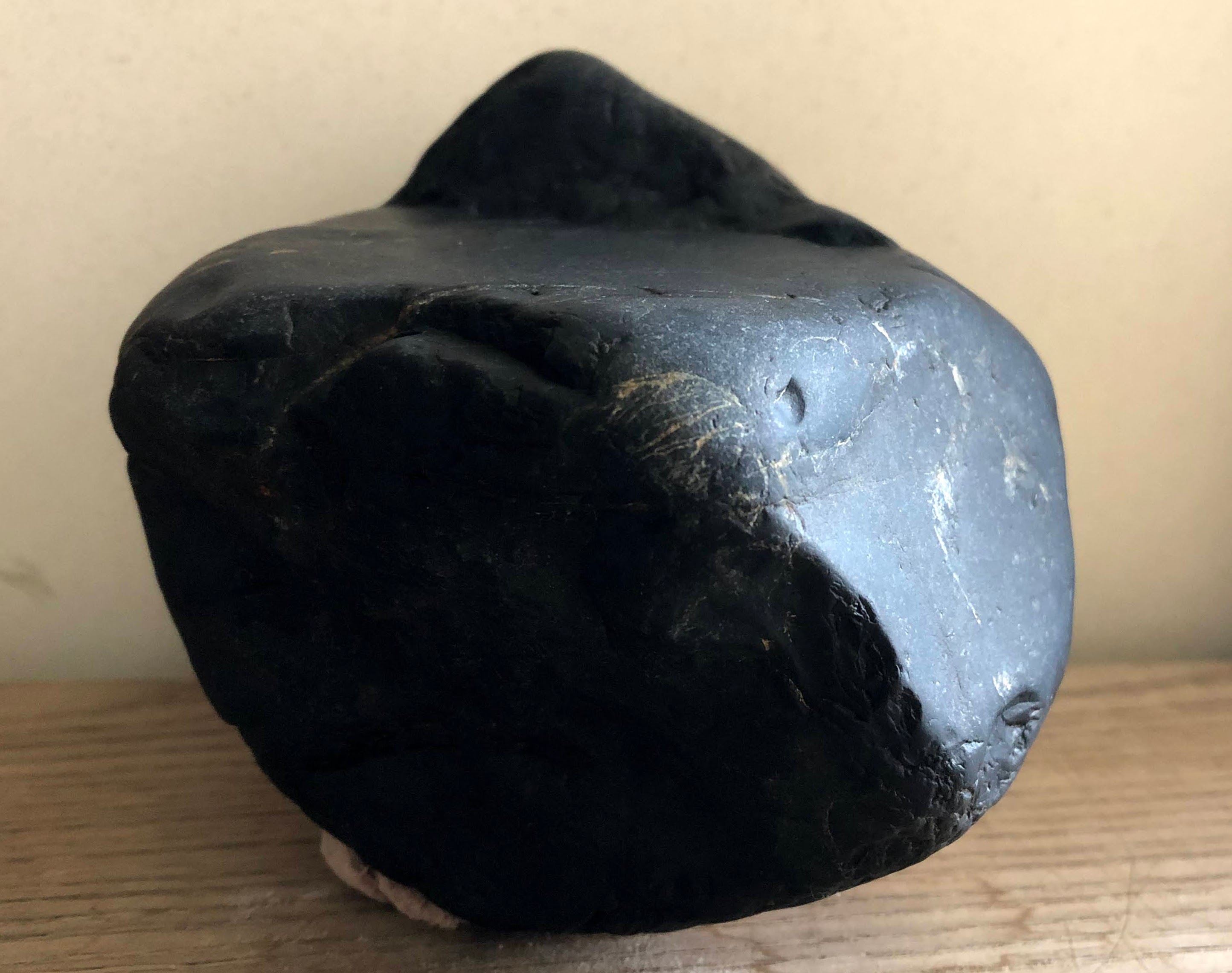
This is KamuiCotan-seki, True black, and also Raised-Doha and Toyama-Doha.
Because Toyama is located on the edge of Doha and Doha has a height.
This Kamui Cotan Seki is good quality and it looks like putting oil on the surface although the truth is just wiping by dry cloth.
This is the reason why Kamui Cotan Seki is called oiled stone.


